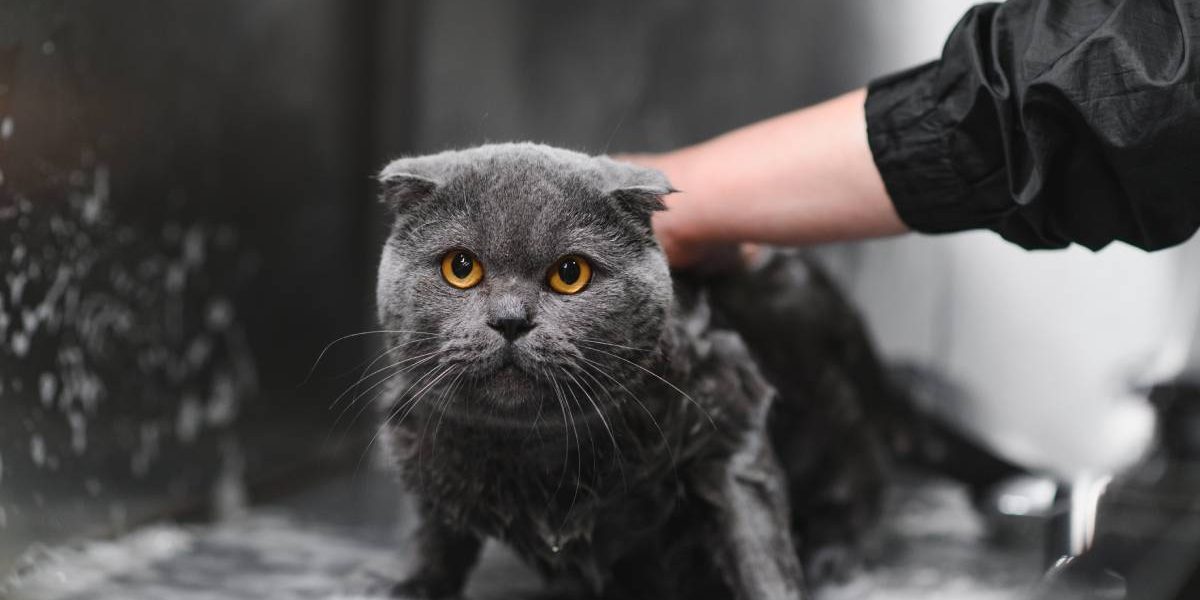Bathing a cat can be a daunting task for many pet owners. Unlike dogs, cats are generally known for their self grooming abilities often spending hours cleaning themselves with their tongues. So, it’s natural to wonder: when should you bathe a cat, and do indoor cats even need a bath?
While cats tend to keep themselves clean, there are certain situations where a bath may be necessary for their health comfort or hygiene.
However, bathing a cat requires careful consideration and the right approach to ensure that both you and your pet stay safe and calm.
In this article, we’ll explore when it’s appropriate to bathe your cat, whether indoor cats need baths, and the dos and don’ts of the bathing process to ensure a smooth experience for both you and your feline friend.
When Should I Bathe My Cat?
Cats are generally very good at keeping themselves clean, but in certain situations, such as when they get into sticky substances like sap, mud, or oil, bathing may become necessary.
This helps remove the dirt and prevents potential skin issues caused by debris trapped in their fur.
In Cases of Fleas or Ticks
Fleas and ticks are common issues that can affect both indoor and outdoor cats. If your cat has fleas, ticks, or other external parasites, a medicated bath can be part of the treatment plan to rid your cat of these pests.
There are specific flea shampoos that you can use on your cat to help treat these issues. Always check with your vet before using flea treatment products to ensure they are safe for your pet.
When Your Cat Has Skin Problems
If your cat is suffering from skin problems like dandruff, dryness, or inflammation, a bath with a specially formulated cat shampoo can be helpful.
There are medicated shampoos available that treat skin conditions, allergies, or infections, which can help soothe your cat’s skin. In such cases, it’s crucial to consult with your veterinarian to determine the proper course of action.
If Your Cat Smells Bad
Some cats have a naturally musky or strong odor, but if your cat suddenly starts to smell worse than usual, a bath may be necessary.
This could be due to a range of reasons, such as a change in diet, a skin infection, or simply rolling in something unpleasant. If your cat’s odor doesn’t go away with regular grooming, it might be time for a bath.
When You Are Preparing for a Trip or Grooming Session
Sometimes, when you’re planning for travel or a special grooming session, you may want to bathe your cat to keep it clean and fresh.
Especially if your cat is going to be in close quarters with others, such as at the vet or a boarding facility, a bath can help them feel and smell better.
Do Indoor Cats Need Baths?
Now, you might wonder: Do indoor cats need baths? The answer generally depends on your cat’s lifestyle and health needs.
Indoor cats tend to groom themselves frequently, and as a result, they usually do not require regular bathing. However, there are exceptions to this rule:
Health Conditions or Skin Issues
Indoor cats may need baths for skin issues or health conditions, with medicated shampoos recommended by vets.
Additionally, avoid feeding cats toxic foods like chocolate, onions, garlic, grapes, raisins, caffeine, alcohol, and xylitol to protect their health. Food no for cats includes these harmful items to ensure their well being.
Over Grooming or Hairballs
Some cats, even those kept indoors, may over-groom themselves, which can lead to hairballs and mats.
If your indoor cat starts to have difficulty keeping their coat free from mats, a bath might be needed to help remove tangles and make brushing easier.
Old or Ill Cats
Older cats or those suffering from chronic health issues may not be able to groom themselves as effectively as younger, healthier cats.
If you notice that your indoor cat is not grooming as much or is having trouble keeping itself clean, a bath may help. In such cases, regular grooming, including baths, can help keep your cat comfortable.
What Not to Do When Bathing a Cat?
Bathing a cat is a delicate process that requires patience, caution, and preparation. If you are unsure of how to bathe your cat or if you’ve never done it before, here are some common mistakes to avoid during the bathing process:
Don’t Use Human Shampoo
Never use human shampoo or soap when bathing your cat. Human shampoos are formulated for the pH levels of human skin and can irritate your cat’s skin.
Cats have much more sensitive skin than humans, and using the wrong products can cause dryness, itching, or allergic reactions. Always use a shampoo specifically designed for cats, as these will be gentle and safe for their skin.
Don’t Force Your Cat into the Water
It’s crucial to never force your cat into water. Cats are known for their dislike of water, and forcing them into it can cause stress and anxiety.
Instead, try to make the bathing experience as comfortable as possible by gradually introducing your cat to the water and using gentle handling.
You might want to consider using a damp washcloth for a gentler approach if your cat is especially water-averse.
Avoid Getting Water in Your Cat’s Ears and Eyes
Be extremely careful not to get water into your cat’s ears or eyes while bathing. Water in the ears can lead to infections or discomfort, and water in the eyes can cause irritation.
Use a damp washcloth to gently clean your cat’s face, and if you are using a bath, keep the water level low enough to avoid splashing their head.
Don’t Use Too Much Water
Cats typically do not need to be fully submerged in water. When bathing a cat, it’s best to keep the water level low, ideally no higher than the cat’s lower legs.
Use a gentle stream of water or a cup to slowly wet the cat’s body. Cats are sensitive to being immersed in water, so keeping the bath shallow will reduce stress.
Don’t Bathe Your Cat Too Often
Bathing your cat too often can be harmful to their skin and coat. Overbathing can strip the skin of its natural oils, leading to dryness and irritation.
Cats generally do not require frequent baths, so only bathe your cat when necessary. For regular grooming, use brushes and combs to help maintain your cat’s coat.
Avoid Using Hot Water
Hot water can cause burns and stress to your cat. Always ensure that the water temperature is warm but not too hot.
It should feel comfortable to the touch for both you and your cat. Lukewarm water is usually the safest choice when bathing a cat.
How to Bathe a Cat: Step by Step Guide
If you’ve determined that your cat needs a bath, it’s important to approach the process carefully and calmly. Here is a step by step guide to safely bathing your cat:
Prepare the Supplies
Gather everything you’ll need before starting: cat-friendly shampoo, a cup or gentle spray nozzle for rinsing, towels, and treats.
Fill the Tub or Sink
Fill the tub or sink with a small amount of lukewarm water. Make sure it’s not too deep just enough to wet your cat’s legs and body.
Gently Wet Your Cat
Slowly and gently wet your cat’s body with the water. Use a cup or a gentle spray nozzle to avoid splashing. Start from the back and work your way down the body.
Shampoo the Coat
Apply a small amount of cat shampoo and massage it into your cat’s coat. Be careful around the face and ears.
Rinse Thoroughly
Carefully rinse the shampoo from your cat’s coat using lukewarm water. Make sure there is no residue left.
Conclusion
Bathing a cat is not always necessary, but it can be essential in certain circumstances such as dealing with skin problems, flea infestations, or when your cat becomes dirty.
Indoor cats generally don’t need frequent baths unless they have health issues or problems with grooming.
When bathing your cat, make sure to follow the right steps and avoid common mistakes to ensure the experience is as stress free as possible for both you and your pet.
With the right approach, you can keep your cat clean and healthy without causing undue stress or harm.











